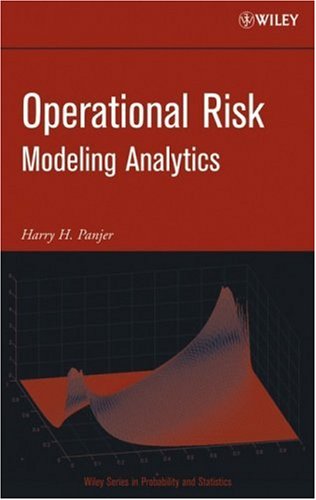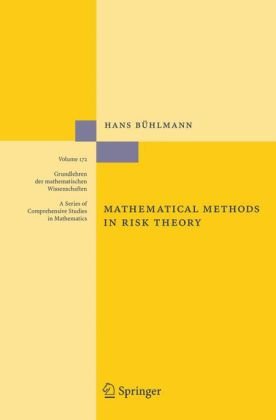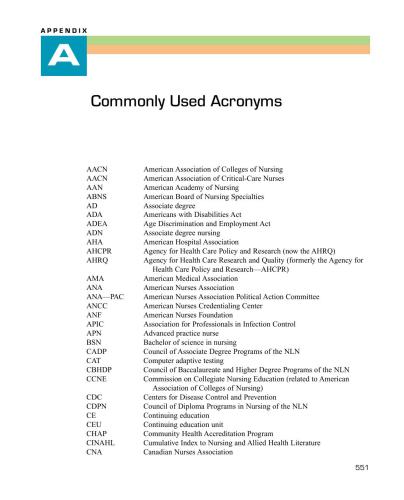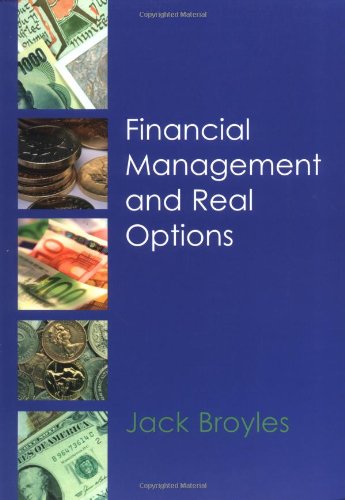Harry H. Panjer9780471760894, 0471760897
Table of contents :
Operational Risk……Page 4
Contents……Page 8
Preface……Page 16
Acknowledgments……Page 18
Part I Introduction to operational risk modeling……Page 20
1.1 Introduction……Page 22
1.1.1 Basel II – General……Page 25
1.1.2 Basel II – Operational risk……Page 27
1.2 Operational risk in insurance……Page 30
1.3 The analysis of operational risk……Page 31
1.4 The model- based approach……Page 33
1.4.1 The modeling process……Page 34
1.5 Organization of this book……Page 35
2.1 Introduction……Page 38
2.2 Distribution functions and related concepts……Page 39
2.3 Moments……Page 49
2.5 Generating functions……Page 57
2.6 Exercises……Page 60
3.1 Introduction……Page 64
3.2 Risk measures……Page 65
3.3 Tail- Value-at- Risk……Page 69
Part II Probabilistic tools for operational risk modeling……Page 74
4.1 Introduction……Page 76
4.2 1 One-parameter distributions……Page 77
4.2.2 Two-parameter distributions……Page 78
4.2.3 Three-parameter distributions……Page 83
4.2.4 Four-parameter distributions……Page 86
4.3.1 Introduction……Page 87
4.3.2 Two important parametric families……Page 88
4.4 Limiting distributions……Page 89
4.5 The role of parameters……Page 92
4.5.1 Parametric and scale distributions……Page 93
4.5.2 Finite mixture distributions……Page 94
4.5.3 Data-dependent distributions……Page 97
4.6.1 Classification based on moments……Page 99
4.6.2 Classification based on tail behavior……Page 100
4.6.3 Classification based on hazard rate function……Page 101
4.7.2 Multiplication by a constant……Page 103
4.7.3 Transformation by raising to a power……Page 104
4.7.4 Transformation by exponentiation……Page 106
4.7.5 Continuous mixture of distributions……Page 107
4.7.6 Frailty models……Page 109
4.7.7 Splicing pieces of distributions……Page 111
4.8 TVaR for continuous distributions……Page 112
4.8.1 Continuous elliptical distributions……Page 113
4.8.2 Continuous exponential dispersion distributions……Page 116
4.9 Exercises……Page 121
5.1 Introduction……Page 126
5.2 The Poisson distribution……Page 127
5.3 The negative binomial distribution……Page 129
5.5 The (a, b, 0) class……Page 133
5.6 The (a, b, 1) class……Page 137
5.7 Compound frequency models……Page 141
5.8 Recursive calculation of compound probabilities……Page 145
5.9.1 The (a, b, 0) class……Page 149
5.9.3 The zero-truncated subclass……Page 151
5.9.4 The zero-modified subclass……Page 153
5.9.5 The compound class……Page 154
5.10 A hierarchy of discrete distributions……Page 155
5.11 Further properties of the compound Poisson class……Page 156
5.12 Mixed frequency models……Page 161
5.13 Poisson mixtures……Page 163
5.14 Effect of exposure on loss counts……Page 168
5.15 TVaR for discrete distributions……Page 169
5.15.1 TVaR for discrete exponential dispersion distributions……Page 170
5.16 Exercises……Page 175
6.1 Introduction……Page 180
6.2 Model choices……Page 181
6.3 The compound model for aggregate losses……Page 182
6.4 Some analytic results……Page 187
6.5 Evaluation of the aggregate loss distribution……Page 190
6.6 The recursive method……Page 193
6.6.1 Compound frequency models……Page 194
6.6.2 Underflow/overflow problems……Page 197
6.6.4 Continuous severity……Page 198
6.6.5 Constructing arithmetic distributions……Page 199
6.7 Fast Fourier transform methods……Page 202
6.8.1 Arithmetic distributions……Page 206
6.9 Comparison of methods……Page 209
6.10.1 TVaR for discrete aggregate loss distributions……Page 210
6.10.2 TVaR for some frequency distributions……Page 211
6.10.3 TVaR for some severity distributions……Page 213
6.11 Exercises……Page 217
7.1 Introduction……Page 224
7.2 Extreme value distributions……Page 226
7.3.1 From a fixed number of losses……Page 227
7.3.2 From a random number of losses……Page 229
7.4 Stability of the maximum of the extreme value distribution……Page 232
7.5 The Fisher-Tippett theorem……Page 233
7.6 Maximum domain of attraction……Page 236
7.7 Generalized Pareto distributions……Page 238
7.8.1 From a fixed number of losses……Page 240
7.8.2 From a random number of losses……Page 241
7.9 Stability of excesses of the generalized Pareto……Page 245
7.10 Mean excess function……Page 246
7.11 Limiting distributions of excesses……Page 247
7.12 TVaR for extreme value distributions……Page 248
7.14 Exercises……Page 249
8.1 Introduction……Page 252
8.2 Sklar’s theorem and copulas……Page 253
8.3 Measures of dependency……Page 256
8.4 Tail dependence……Page 258
8.5 Archimedean copulas……Page 259
8.6 Elliptical copulas……Page 272
8.7 Extreme value copulas……Page 276
8.8 Archimax copulas……Page 281
8.9 Exercises……Page 282
Part III Statistical methods for calibrating models of operational risk……Page 284
9.1 Introduction……Page 286
9.2.1 Introduction……Page 287
9.2.2 Measures of quality of estimators……Page 288
9.3 Interval estimation……Page 294
9.4 Tests of hypotheses……Page 296
9.5 Exercises……Page 299
10.1 Introduction……Page 302
10.2 Method of moments and percentile matching……Page 305
10.3.1 Introduction……Page 308
10.3.2 Complete, individual data……Page 310
10.3.4 Truncated or censored data……Page 312
10.4 Variance and interval estimation……Page 316
10.5.1 Definitions and Bayes’ theorem……Page 323
10.5.2 Inference and prediction……Page 326
10.5.3 Computational issues……Page 334
10.6 Exercises……Page 335
11.2 Poisson distribution……Page 348
11.3 Negative binomial distribution……Page 352
11.4 Binomial distribution……Page 355
11.5 The (a, b, 1) class……Page 357
11.6 Compound models……Page 362
11.7 Effect of exposure on maximum likelihood estimation……Page 363
11.8 Exercises……Page 364
12.1 Introduction……Page 368
12.2 Representations of the data and model……Page 369
12.3 Graphical comparison of the density and distribution functions……Page 370
12.4 Hypothesis tests……Page 375
12.4.1 Kolmogorov-Smirnov test……Page 376
12.4.3 Chi-square goodness-of-fit test……Page 379
12.4.4 Likelihood ratio test……Page 384
12.5.1 Introduction……Page 386
12.5.3 Score-based approaches……Page 387
12.6 Exercises……Page 394
13.1 Introduction……Page 402
13.2.1 ML estimation from the extreme value distribution……Page 403
13.2.2 ML estimation from the generalized Pareto distribution……Page 406
13.2.3 Estimating the Pareto shape parameter……Page 408
13.2.4 Estimating extreme probabilities……Page 410
13.3.1 Mean excess plots……Page 411
14.1 Introduction……Page 414
14.2 Maximum likelihood estimation……Page 415
14.3 Semiparametric estimation of the copula……Page 417
14.4 The role of thresholds……Page 418
14.5 Goodness-of-fit testing……Page 420
14.6 An example……Page 421
Appendix A Gamma and related functions……Page 426
B.1The method of rounding……Page 430
B.2 Mean preserving……Page 431
B.3 Undiscretization of a discretized distribution……Page 432
Appendix C Nelder-Mead simplex method……Page 434
References……Page 436
Index……Page 445







Reviews
There are no reviews yet.